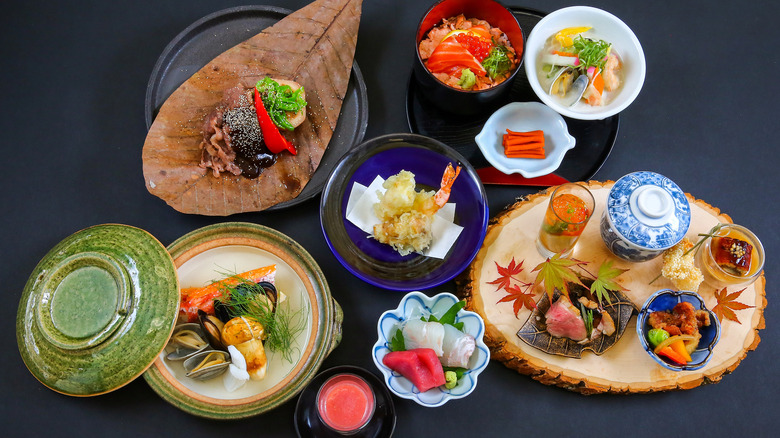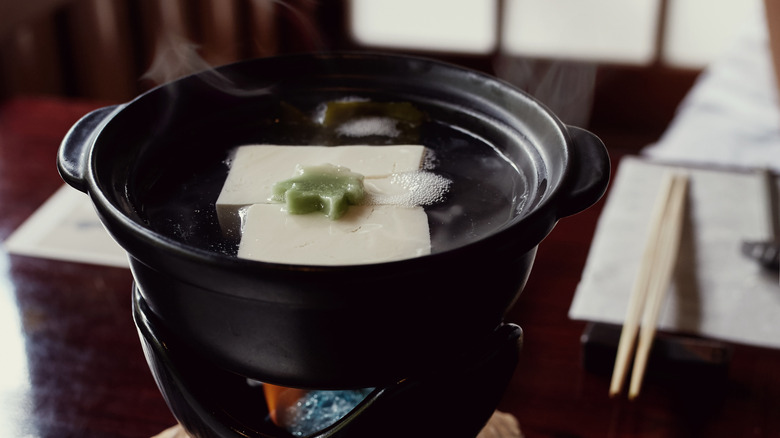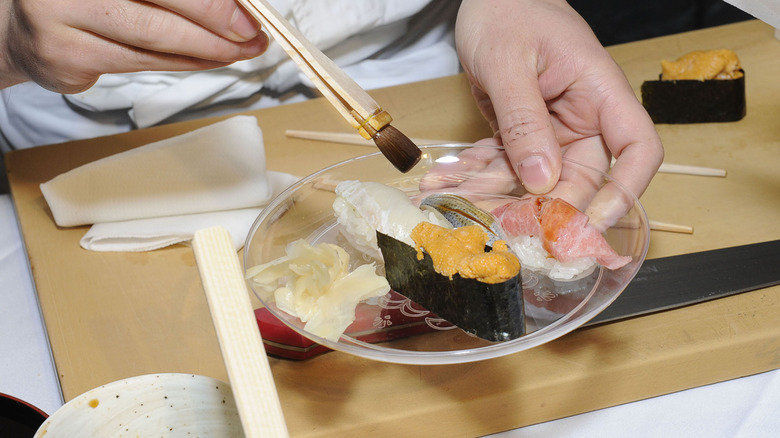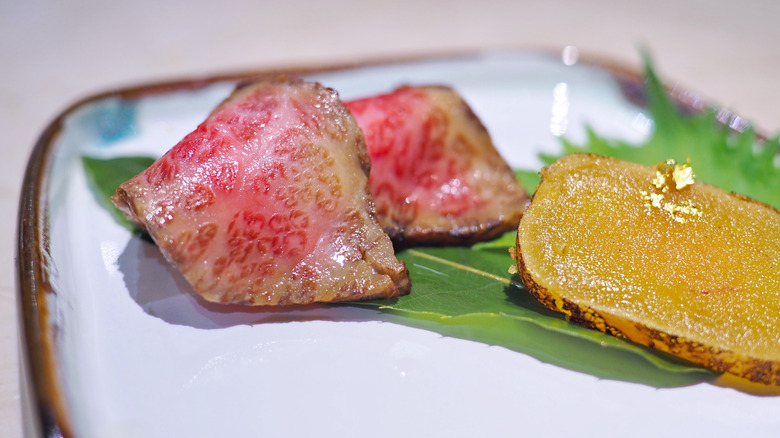What To Expect When Eating Kaiseki
Fans of Japanese cooking will know it as the type of cuisine that can elevate a simple bowl of noodles into something that approaches high Asian art. But even those who enjoy good Japanese food regularly might be wowed the first time they are served kaiseki ryori.
Kaiseki ryori is more than an elaborately plated multi-course dinner. The meal is meant to present dishes whose ingredients are at their very best — be it produce or protein, so the seasonality of ingredients play an important role in what gets served during the meal. The color of each kaiseki dish is vibrant and presented in a simple, straightforward manner, so that, as Savor Japan puts it, "the true flavor of each ingredient [can be] expressed." And while chefs are free to explore the depths and highlights of the ingredients they prepare for a kaiseki meal, there is still structure; dishes need to be served in a specific order, and all need to be prepared in a cooking technique executed in Japanese cuisine (via Japan-Guide.com).
The meal is not meant to be eaten on-the-go, but to be savored and enjoyed slowly — from the time the starter is set down on the table, until the courses end with dessert.
Brief history of Kaiseki
How kaiseki began and evolved into what it is today appears to depend on who you ask. Robb Report magazine says there are two forms of kaiseki: one that came out of meals served during Buddhist tea ceremonies; and the other, which evolved in a less spiritual way. Eric Rath, a University of Kansas history professor (who focuses on Japanese food culture), told the outlet, "In the medieval period, you'd have warriors being served multiple trays of food all simultaneously. What the tea ceremony does is it just takes one or two of those trays and simplifies the meal. The kaiseki version which you find in restaurants, instead of serving all the food at once, it'll present those foods sequentially."
Kaiseki also has a colorful past, because even as this type of meal was served at tea houses and restaurants to pilgrims looking to go to Kyoto's temples, kaiseki was also served at Tokyo's brothels. "It was a masculine thing to do. Men would go there to eat, drink, and be with women," Rath explained.
Are omakase and kaiseki the same thing?
To many diners, Japanese haute cuisine is synonymous with "omikase," and Michelin says the terms "omakase" and "kaiseki" are even used interchangeably in some cases, but the two could not be more different.
Omakase — or "omakase shimasu" is translated as "I trust you, [the chef]" — and while it is often compared to a Western tasting menu, Sushi Modern describes omakase as a sushi-centered meal specially created by the chef where seasonal ingredients meet budgets and tastes. The meal is more often than not enjoyed at the sushi counter, because each item is prepared to order, and is presented as ready to be eaten. Dishes are served in a specific order, from more gentle flavors to stronger ones.
Kaiseki is another type of meal altogether, or as Kaiseki chef Niki Nakayama explains it, "The philosophical idea of kaiseki is you have to be representative of the area that surrounds you. You have to talk about nature" (via Robb Report). "You need to take all the great ingredients of that moment and find the best technique to present them. So it's always constantly recalibrating on understanding the ingredient and finding the best method to highlight it. Today's carrot might be really good if you ate it as a sashimi, but maybe tomorrow's carrot is going to be more delicious if you braised it. Or, you know, maybe that same carrot, bringing out that flavor means you should fry it."
How is kaiseki served?
Kaseki is usually served in a series of small helpings, and according to Michelin, there can be anywhere from six to 15 courses, although nine courses would be considered a standard kaiseki ryori. The meal begins with a saizuke — or a pickled appetizer, before moving on to a hassun — a series of small dishes served on a single round or long platter. Following that is a suimono or a soup, usually made with a dashi broth, followed by a sashimi course or tsukuri. Toki Tokyo says sashimi is not a must, and it can be replaced with namasu: raw fish and vegetables that have been flavored with vinegar.
From there, you are given a yakimono or a grilled dish, which is usually seafood, a takiawase or a dish whose ingredients might have been gently poached or simmered. Last is a shokuji or rice, served with miso and pickles, before dessert, which can be fruits or sweets. While the servings at a kaiseki ryori might appear small at first, the meal goes a very long way — and there should be no surprise that you might not only find yourself sated, but unable to move after such a memorable meal that appeals to all the senses.



